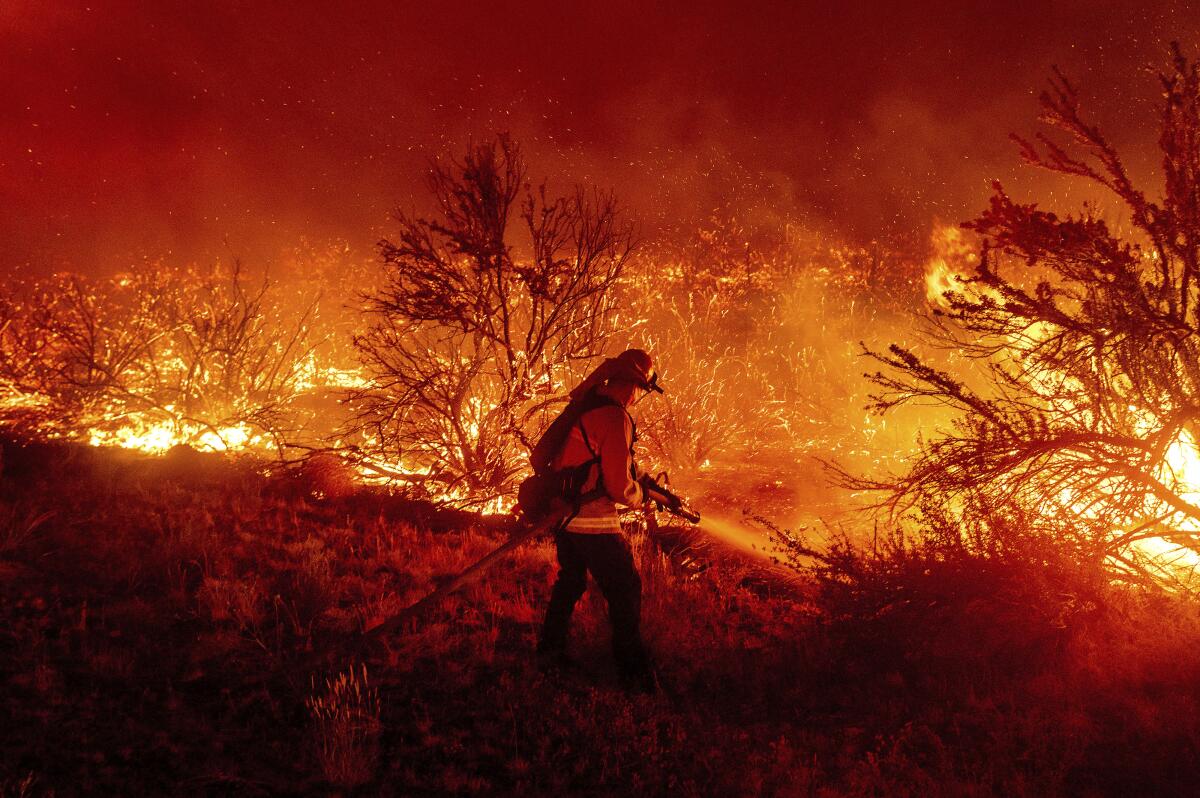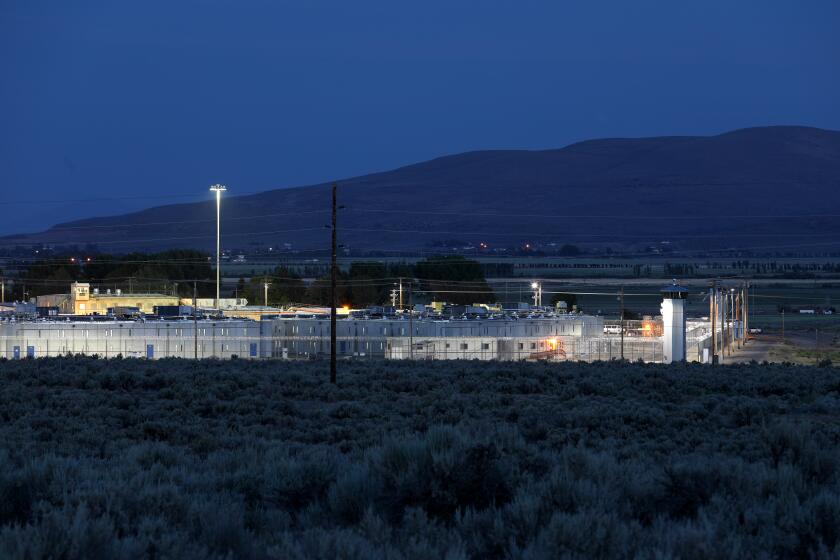Dixie fire races toward Susanville, forcing some residents to evacuate

- Share via
With the Dixie fire speeding closer to Susanville, some residents are beginning to leave.
Amid recent gusty winds, the Dixie fire — California’s second-largest wildfire on record — grew to 635,728 acres by Wednesday morning. After burning for more than a month, it remains only 33% contained. A red flag warning extends until 11 p.m. for the east zone of the fire.
Dan Newton, the interim city administrator for Susanville, lives just west of the city line and was ordered to evacuate because of the Dixie fire on Monday. He is now staying with a friend in town while his wife and two adult children stay in Chico.
“A lot of folks have been evacuated from Susanville and surrounding areas. I’m definitely — I’m just one of many,” he said, his voice cracking with exhaustion. “Unfortunately, we’re somewhat becoming used to this. We had to do this last year as well.”
Last summer, the Hog fire and Sheep fire burned near Susanville, creating burn scars that can be seen from town.
Increasingly, the people of Susanville, whose population has shrunk dramatically over the last 15 years, feel as if they have to save their town in every sense — not only from fires, but also from potential economic devastation after the state’s planned closure of the California Correctional Center, a minimum-security prison that employs more than 1,100 people.
After spending Monday night in his R.V. parked on a city street, Newton went to a court hearing for Susanville’s lawsuit to keep the California Correctional Center open.
Local officials say they were blindsided by the state’s April announcement that the prison would close by June 2022. Earlier this month, a Lassen County Superior Court judge granted the city of Susanville a temporary restraining order halting the state’s plans to close the facility.
“It does not appear to the Court that the necessary requirements imposed upon the executive branch in facilitating the decision to close the California Correctional Center have been complied with,” Judge Mark Nareau wrote in his decision to grant the temporary restraining order. “The executive branch of the government of the state of California, like the citizens it serves, must comply with the law.”
Newton said the last few days have been chaotic, juggling the hearing and monitoring the flames.
“It is just very busy,” he said. “We’re trying to prepare ourselves if the wind pushes closer to Susanville and working through the logistics on that.”
On Wednesday, he said, the winds seemed to be in the city’s favor, and “in Susanville, the sky is blue for the first time in weeks.”
But even that that was hard to celebrate, he said. If the winds are good for Susanville, they might mean the fire is headed for another community.
California’s decision to close the prison in Susanville rocked the town, where the consequences could be dire for residents and businesses that depend on the economics of incarceration.
“We are all kind of taking turns with the imminent danger,” he said. “It’s hit, obviously, a lot of communities already.”
There were no immediate plans, as of midday Wednesday, to evacuate two state prisons in Susanville that house approximately 5,400 inmates.
“At this time, there are no directives to evacuate, and the institutions are in no immediate danger,” Dana Simas, a spokeswoman for the California Department of Corrections and Rehabilitation wrote in a statement to The Times. “We are also monitoring air quality and working with our public health and health care partners to ensure the safety and wellness of our population and staff.”
The California Correctional Center and the adjacent High Desert State Prison, a higher-security lockup, are about eight miles east of central Susanville.
The California Correctional Center is at 65% capacity, with 2,187 inmates, and High Desert State Prison is at 139% capacity with 3,220 inmates, according to state data. Together, the prisons provide more than 45% of the employment in Susanville.
Simas said the state corrections department is in “constant communication” with Cal Fire and the California Governor’s Office of Emergency Services, as well as local officials, regarding the Dixie fire. Officials also are monitoring air quality and is providing N95 masks to staff and inmates at both prisons.
The institutions, Simas said, “have long-standing response plans in place to ensure continued daily operations, as well as the safety of our staff and incarcerated population through natural or other disasters.”
Simas said she could not discuss details about where and how prisoners would be relocated during an evacuation “for safety and security purposes.”
More to Read
Sign up for Essential California
The most important California stories and recommendations in your inbox every morning.
You may occasionally receive promotional content from the Los Angeles Times.













